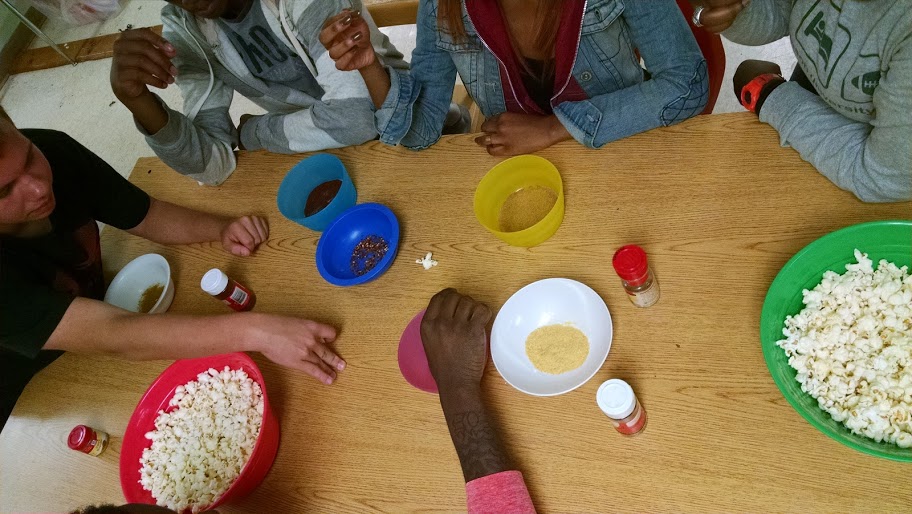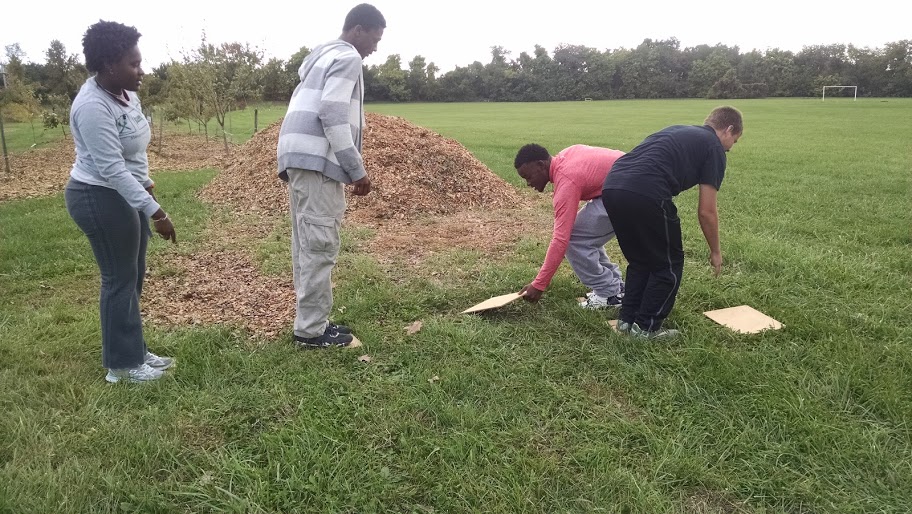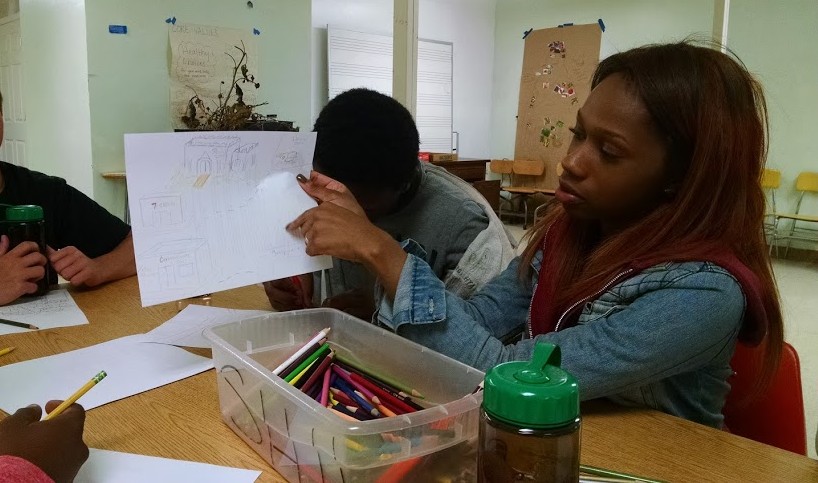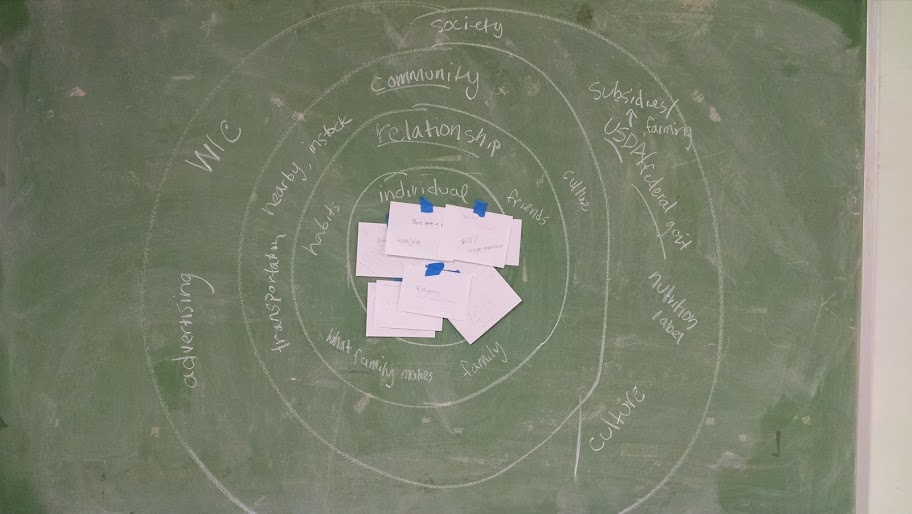Youth Crew 2015 – Day 3!
Today’s Youth Crew started with “Crossing the Acid River.” The team was challenged to make it across the “river” without stepping off their rafts, while hungry (and acid-proof) crocodiles swarmed around them, ready to pounce if they left one unattended. Their first trip across the river left one member stranded on the other side without any rafts, so they were sent back to the start to strategize. Their next attempt involved working together to make sure they coordinated their movements across the river – this time everyone made it across safely! (Here’s a link to the activity directions.)
One of Youth Crew’s core values is “Try It On,” meaning we give our members many opportunities to test out new skills, activities, or flavors. We experimented with new spices today by sampling stovetop-popped popcorn dusted with paprika, cumin, lemon pepper, or nutritional yeast. Now we know how to make a quick, healthy snack at home!
Our main lesson for the day was focused on food environments. A food environment is made up of all the places where we get food in our daily lives – grocery stores, restaurants, schools, gardens/farms, corner stores, farmers markets, etc. First, each team member drew their personal food map that included their homes and all the places they typically get food. We presented our maps back to each other and learned a lot about one another’s neighborhoods and eating habits! After presentations, Molly asked each crew member to rate their map for how healthy it was. Ratings ranged from “B” to “D” depending on how easily each member thought they could find healthy food in their neighborhood. We talked as a group about solutions for bringing all of our health ratings to an “A.” The team had awesome suggestions, from finding ways to make health options cheaper, teaching people about healthy food, to providing transportation to farmers markets for people who live too far to walk. Molly shared that Real Food Farm is already working to help improve healthy food access by using our mobile farmers’ market to bring food closer to people, offering Double Dollars for customers purchasing produce with their EBT cards, and educating our community about healthy eating!
We also took time to review food environment maps for different neighborhoods in Baltimore and compare them to rates diet-related disease in those neighborhoods. Diet-related diseases include heart attack, cancer, and stroke. We could see that neighborhoods with large numbers of corner stores and fewer grocery stores had worse health outcomes than those with very few corner stores. We can think of these areas as “food deserts” – neighborhoods where fresh food is difficult to find – or also as “food swamps” – neighborhoods where unhealthy food options are all around. Molly explained that there are many factors that contribute to poor health besides just healthy food access – income, education, and health care availability are also contributors. We discussed how the diet-related disease map for Baltimore City closely follows income and racial lines across the city.
(This activity was adapted from the Johns Hopkins’ Center for a Livable Future’s Food Environments lesson.)
We can also think about “food environments” as being factors that influence our food choices. Next, each crew member wrote out things that impact their own food choices. They came up with suggestions such as “eating healthy for sports,” “what I think tastes good,” and “being concerned about my weight.” Molly used these suggestions and grouped them into spheres of influence – the individual level, relationship level, community level, and societal level. (These levels are based on the Socio-Ecological Model of behavioral influence.) As a team, we brainstormed influences at each level, ranging from personal taste/preferences, income, what your friends and family are eating, what’s in stock at stores near you, what the United States Department of Agriculture requires in school meals, and food company advertisements. By the end of the day, the group realized that what we eat is not entirely up to us alone – we are strongly influenced by the food environment around us.
As always, we ended with shoutouts to recognize crew members for their contributions that day!
About Real Food Farm
Real Food Farm works toward a just and sustainable food system by improving neighborhood access to healthy food, providing experience-based education, and developing an economically viable, environmentally responsible local agriculture sector.





